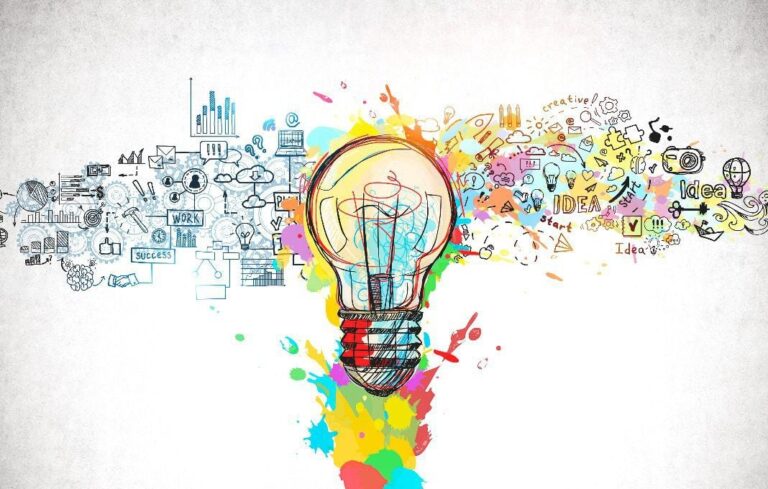If innovation is the lifeline of competitive success in business, why are so many companies fall into a neutral position? Narrison the stagnant companies, that is, their aspects. Companies that have not been reformed lose their competitiveness. Therefore, consider the introduction of coordinated design thinking as a framework for breaking the stalemate state and making the leader and the team cooperate and innovating.
Do your company employees have the opposite perspective, or are they experiencing the moment of tension or dissonance? You have resources to apply coordinated design thinking and innovate the team. Tension between team members can be considered constructive. It promotes innovation and excellent work. And the more you are exposed to the diversity of the viewpoint, the more possibilities become clear.
Applying design thinking in such a cooperative environment can be a very powerful methodology. The following components can help leaders and teams to achieve the creative collaboration necessary for innovation.
• Please collect information. Start the process from immersing in the unique situation of the problem. Thoroughly investigate the background and stakeholders, and deeply understand all related issues, conflicts, and restrictions surrounding the problem. Consider a historical point of view and various precedents that can be applied. By analyzing, understanding, and interpreting past ideas, you can derive the current and future solutions. We will conduct an effective interview, conduct a mini -ethnic magazine survey, and consult with people with major knowledge to promote understanding. All of these data can provide information to the survey and provide a wider background that triggered ideas.
• Analyze and define the problem. This may seem contrary to intuition, but defining an appropriate problem is actually a creative act. Even if the problem is not completely clarified, it may be useful to use incomplete data to proceed with the components of the design thinking loop first, explain the problem in more detail, and expand it. Other problem -solving methods suggest that the problem needs to be clearly settled before taking action to solve the problem. However, in design thinking, the optimal solution can be obtained by continuing the dialogue, diagnosis, and reconstruction of the problem throughout the process. Strict analysis is required to identify the most prominent problem, but the problem may be concealed because the problem immediately accepts the problem at face value. Let's have doubts about the current situation and initial assumptions. Analysis is also a meaningful prerequisite for brainstorming. As a result, you can see the problem from multiple perspectives from a clear, organized and fine perspective.
• Create an idea. Based on the information and problem analysis collected so far, we carry out brainstorming and vision sessions, and as many ideas as possible, including good ideas, bad ideas, and unconventional (and stupid) ideas as possible. I will create it. Create innovative conceptual diagrams and ideas in combination with various impacts. Make sure that people involved can contribute to solutions meaningfully. Which is more courageous to listen and respond to the opinions of stakeholders and stubbornly support the personalized ideal solution? Perhaps the tension between reality and ideal. It will motivate innovation and continue to link creativity to solving mediocre but important issues.
• Realize synthesis by modeling. Extract the best ideas from brainstorming sessions to higher resolution and details, and create some alternative prototypes, models, or draft solutions. Models and prototypes do not need to be an object. It is a kind of solution or product. For example, everything can be targeted, from strategies, apps, stories, to business models that function as a demonstration (ideas operation prototype). These vehicles not only function as an excellent simulation of proposed preliminary solutions, but also the most important thing is that you can easily operate, experiment, and play, and do so. there is. Learning and discovering are most important in all cases, regardless of success or failure.
• We will give a critical evaluation. This important step to test the model gives you the opportunity to improve solutions and projects. Verification (or do not verify) concepts and solutions related to the definition of problem by exposing the critical evaluation from stakeholders, colleagues, and objective outsitors. Feedback from stakeholders is especially important for meaningful revisions. Accept constructive criticism regardless of the source, change the powerful ideas, and test again. That doesn't mean you should always respect criticism. Comments may be out of order or are completely wrong. In that case, it is necessary to recognize that someone else may have the advantage of the best profit for your project. Therefore, carefully address important issues, extract the best part, and build it based on it, but ignore obviously out of -target or unrelated ones. Changes and adjustments in accordance with criticism should be considered not as compromising, but more sensitive and special problems.
Bring out the maximum potential
The solution must pass through the loop of the components described above for the number of times suitable for the problem. In other words, get feedback, evaluate the results, adjust the components, and repeat the loop using new data. Then implement it.
One of the features that distinguishes coordinated design thinking is to integrate a certain magical element, that is, an important intangible element that separates talented solutions and excellent solutions. Not all issues are suitable for this, but always look for opportunities that surpass the actual problem. We respect the problem, but it is also necessary to create something beyond the immediate usefulness of the solution. Perhaps the stakeholders did not imagine. It brings out the maximum possibilities in the constraints and, preferably an emotional reaction. This expresses coordinated design thinking in the best state.
When the team understands the above components, depending on the problem and its context, they can carefully select, refine, weight them, and combine them with various hybrids to create their own process for each problem. This process can be part of a company's unique methodology to continue collaboration, innovation, growth, and market control.

